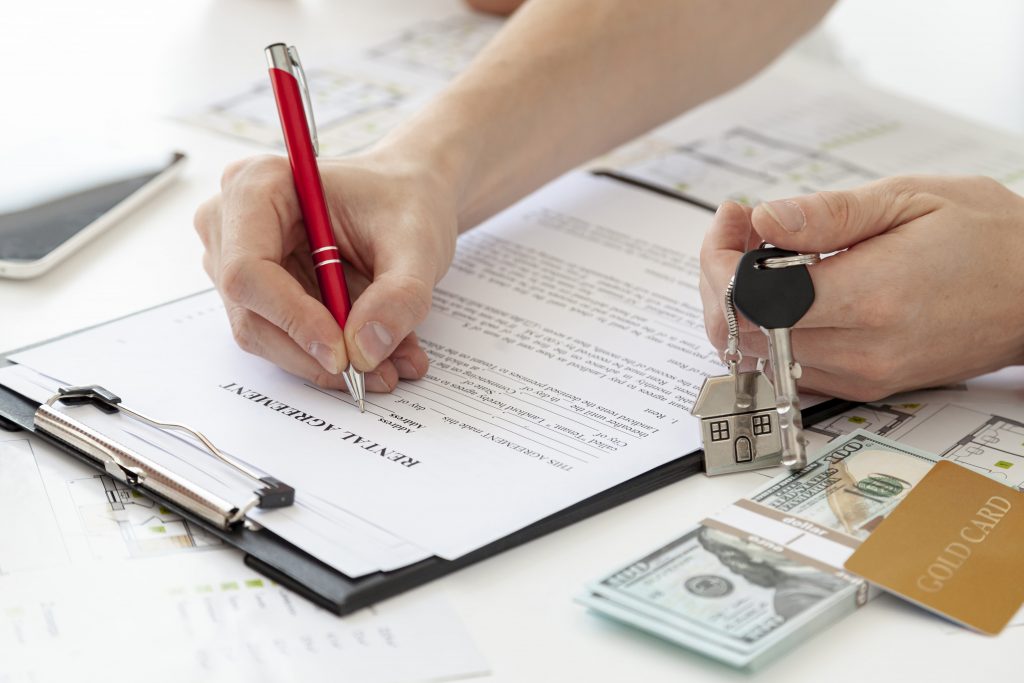Even if your rental property isn’t the lifeblood of your income, it’s likely a big part of it. With that in mind, you need tenants who will take care of it, pay their rent on time, and report maintenance needs in a timely manner. But how can you be considerably certain that they meet these criteria?
In this article, we will provide a short guide for choosing the best tenants. Whether you’re a first-time landlord and just purchased your first apartment complex or you’ve been at this for a while, there are likely some aspects you haven’t thought of.
But first, Whats a tenant?

A tenant is a person or an entity who temporarily inhabits another person’s (known as the landlord) property in exchange for an agreed-upon sum of money (rent). There are different types of tenants, such as:
- Residential Tenants: Individuals or families renting a home or apartment for living purposes.
- Commercial Tenants: Businesses that lease office space, retail stores, or other commercial properties.
- Industrial Tenants: Companies that rent warehouses, factories, or other industrial spaces.
Here are some other key points you should know about tenants.
Rental Agreement
Tenants typically enter into a rental agreement or lease with the landlord. The terms of use of the tenancy, including the duration of stay or possession, rent amount, and main responsibilities of both parties, are mentioned in this piece of document.
Security Deposit
Tenants often pay a security deposit at the start of the tenancy. The landlord keeps this deposit and uses it to pay for any damages to the rental or unpaid rent when the tenant moves out.
Lease Duration
Tenancies can be short-term (month-to-month) or long-term (typically one year or more). The lease duration is specified in the rental agreement.
Renewal and Termination
At the end of the lease term, the tenant and landlord can agree to renew the lease, or the tenant can choose to move out. Proper notice, as specified in the lease, is usually required for termination.
Eviction
If a tenant fails to comply with the lease terms, such as not paying rent or damaging the property, the landlord may initiate eviction proceedings. However, this process must follow legal procedures to protect the tenant’s rights.
How To Choose A Tenant For Your Rental?
Now that you know who is a tenant, let us take a look at some of some of the aspects you need to keep in mind while choosing a suitable tenant for your rental:
A Major Rule
Per The Fair Housing Act, you have to remember that when it comes to purchasing, selling, renting, or financing a home, it’s illegal to discriminate based on:
- Nationality
- Race
- Skin color
- Sex
- Religion
However, you’re not prohibited from basing your decision on the results of a criminal background check.
The Listing
The first thing to remember is that a great rental listing will generally pique the interest of higher-quality applicants and garner more interest overall. To make a quality listing, everyone knows you must have a title that includes the price and the number of bedrooms/bathrooms. But you need to make it stand out with something a little more catchy by highlighting a great feature of the property. Try something along the lines of:
3 bedroom/1.5 bath home with a large backyard with brand new sod, close to schools and parks
In your description, you should use positive descriptors (spacious, cozy, beautiful) to highlight the best features (en suites, fireplace, swimming pool), give details about the area (near downtown, amenities), details about the rental (pets are/aren’t allowed, deposit required, no-smoking) and how potential renters should get in touch with you.
Criteria
If you want to lessen the chances of serving an eviction notice for non-payment, property damage, or other major issues, you need to set the right criteria from the start. Two of the strongest aspects you should consider are credit score and rental history.
While you don’t want to come across as a dreadful landlord, being strict and applying your criteria fairly will help ensure that your new tenant meets the standard you desire. A good place to start is somewhere along the lines of requiring at least a 650 credit score, not having any prior evictions, bankruptcies, or a felony record, and making at least 3x the rent.
Whether you have listed your rental on Zillow, Craigslist, or other listing services, you not only need to be strict in your criteria, but you also need to prescreen them before you even set a face-to-face interview date. You should also prepare pre-screening questionnaires to efficiently determine which leads are worthwhile and which should be put in the rejected folder. However, when making your criteria list, be sure to keep the Fair Housing Act and local tenant rights laws in mind.
Final Checks
Of course, the next logical step is the interviews of potential renters, but that doesn’t mean you will make the first applicant you interview sign a lease on the spot. Take the time to check references from previous landlords, as they can often give you insight that your tenant screening report couldn’t give you. For example, they may have had a lot of neighbor complaints, or they were constantly complaining about minor issues.
Another thing you should definitely do is a quick Google search of their name. Sometimes, you can find out more this way than with a tenant report. For example, on their application, they claim they’ve worked for sixteen years as an electrician, but the career history on their LinkedIn profile doesn’t match.
Don’t be afraid to do a little sleuthing!
Best Practices To Follow While Interviewing Potential Renters
Conducting face-to-face and thorough interviews and checking references are crucial steps and will help you choose the best tenants for your rental. Here are some tips you can follow to ensure that the interview process goes smoothly.
- Verify Identity: Ask for a government-issued ID to confirm the applicant’s identity. This helps prevent fraud and ensures you are dealing with the correct person.
- Discuss Financial Stability: Inquire about the applicant’s income, employment status, and any other sources of income. A general rule is that the rent should not exceed 30% of their monthly income.
- Understand Rental History: Ask about their previous rental experiences, including how long they stayed at each place and their reasons for leaving. This can provide insights into their reliability and stability as a tenant.
- Lifestyle and Habits: Discuss their lifestyle to ensure it aligns with your property’s rules. For example, ask about pets, smoking habits, and how they maintain their living space.
In closing, to find suitable tenants, you should have strict eligibility criteria that also meet the standard of The Fair Housing Act. After shortlisting a few possible tenants, conduct a thorough background check along with a bit of investigative work to choose the best tenant for your rental.
Read More…






















